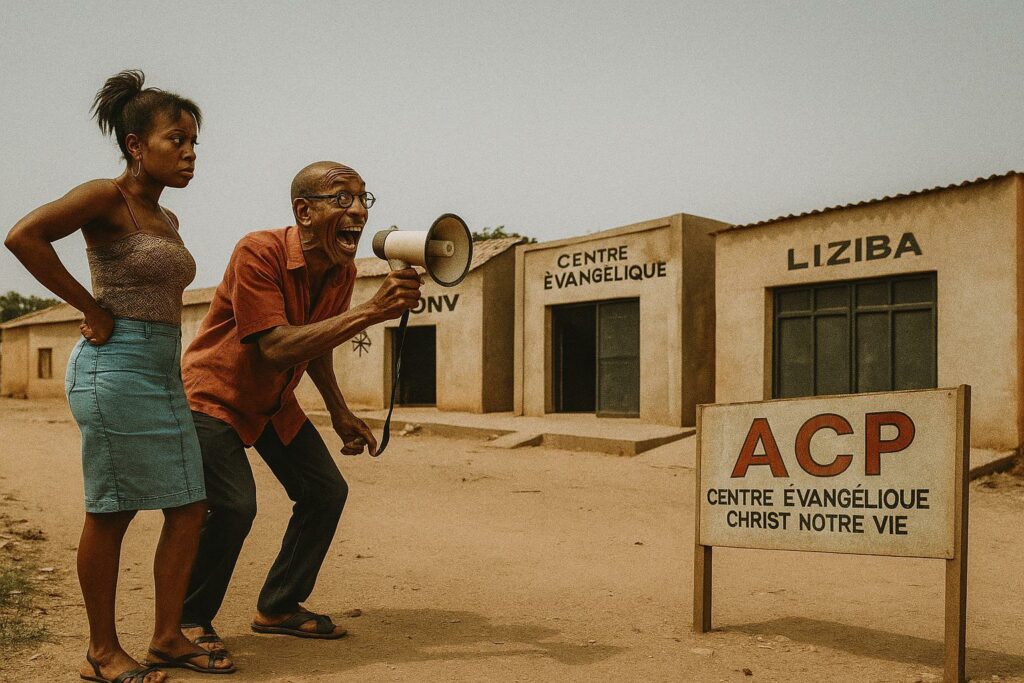Urban Vibrancy Meets Acoustic Fatigue
The Congolese capital rarely sleeps. From the neon-lit corridors of Poto-Poto and Moungali to informal gatherings along the Congo River, amplified music, automobile horns and late-night prayer sessions weave an auditory tapestry that many residents view as an emblem of post-pandemic revival. Yet the same soundtrack, delivered through industrial speakers often pushed beyond 90 decibels, leaves families in adjacent compounds struggling to hold conversations or find restorative sleep. Anecdotal testimonies gathered in Talangaï, Makélékélé and Bacongo reveal a growing perception that the city’s celebrated conviviality risks morphing into an everyday assault on cognitive quiet.
Public Health Implications of Prolonged Decibel Exposure
The World Health Organization recommends average night-time noise levels below 40 dB to prevent adverse cardiovascular and psychological effects (World Health Organization, 2018). Preliminary measurements conducted in Brazzaville by researchers from Marien Ngouabi University during the 2022 dry season recorded frequent nocturnal peaks of 75–85 dB in densely populated quarters. Local clinicians at the Centre Hospitalier Universitaire attest to a steady uptick in insomnia-related consultations and hypertension among middle-aged patients, trends that echo regional studies from Abidjan and Lagos.
Health economists caution that untreated sleep disorders and stress-induced hypertension may erode labour productivity and inflate public expenditure on chronic diseases. While empirical cost-benefit analyses specific to Congo-Brazzaville remain limited, a 2021 African Development Bank brief estimated that African cities lose as much as 0.6 % of GDP annually to noise-related morbidity. Such data reinforce the urgency of calibrating preventive policies without damping the economic engines—hospitality, entertainment, religious tourism—that thrive on high-energy atmospheres.
Regulatory Architecture and Governmental Initiatives
The Ministry of the Interior’s Circular 523/MID-CAB of 4 October 2017 provides a clear legal scaffold: durable construction materials, fire exits, proof of registration and, crucially, the prohibition of recurring noise pollution near schools, hospitals and other sensitive facilities. Senior officials emphasise that the directive is not punitive but rather a framework for ‘responsible coexistence’—a phrase repeated during a 2023 press briefing by Minister Raymond Zéphyrin Mboulou. Enforcement, however, remains a logistical challenge in a fast-growing metropolis with more than 1.8 million inhabitants and an expanding informal sector.
Municipal authorities have responded with targeted nocturnal patrols, calibrated fines and community mediation committees. Data from the Brazzaville Urban Community indicate that between January and August 2023, 312 establishments received compliance notices, and 57 were temporarily closed for persistent infractions. Concomitantly, the Ministry of Health has launched awareness campaigns on safe sound levels, distributing leaflets in French and Lingala across public markets and taxi hubs.
Socio-Cultural Dimensions and Stakeholder Voices
Noise in Brazzaville is not merely a by-product of commerce; it is a vector of identity. Owners of family-run bars in Moungali argue that live music attracts domestic tourists and sustains employment for sound technicians, waitstaff and local artists. Pentecostal pastors, whose congregations meet nightly, contend that spiritual devotion expresses itself through song and collective prayer, indispensable to community resilience.
Residents committed to quieter neighbourhoods present an equally compelling narrative. ‘I cannot ask worshippers to stop praising God, but I would like my children to revise their lessons without shouting over loudspeakers,’ says Josiane Ngoma, a schoolteacher in Bacongo. Her sentiment is mirrored by parent-teacher associations that advocate staggered service schedules and the installation of acoustic insulation funded through public-private partnerships.
Experts at the Congolese Observatory of Human Settlements note that negotiated solutions often yield better long-term compliance than punitive closures. Pilot dialogues facilitated by local NGOs in the arrondissement of Madibou led to voluntary curfews and decibel caps monitored with smartphone applications, reducing complaint calls to the municipal hotline by 38 % over six months.
Prudent Pathways Toward Sustainable Soundscapes
Urban planners suggest that addressing noise requires an ecosystem approach combining infrastructure, technology and behavioural change. The forthcoming Brazzaville Master Plan, drafted with support from UN-Habitat, envisages mixed-use zoning that buffers residential blocks with green corridors capable of absorbing acoustic energy. Simultaneously, tax incentives for sound-proofing materials could encourage proprietors of night-time venues to upgrade equipment. Telecommunications firms have proposed geolocated messaging services alerting drivers to ‘quiet zones’, a practice already piloted in Kigali.
Crucially, observers emphasise that policies must preserve Brazzaville’s cultural vitality while protecting public health. As Professor Henri-Pascal Okemba of Marien Ngouabi University puts it, ‘Silence is not the objective; harmony is.’ This ethos underpins the government’s consultative roadmap, which aligns environmental stewardship with the strategic economic vision articulated in the National Development Plan 2022-2026. By integrating acoustic management into broader urban resilience initiatives—covering climate adaptation, transport reform and digital innovation—the Congolese authorities signal an intent to foster a capital that is simultaneously vibrant and livable.

